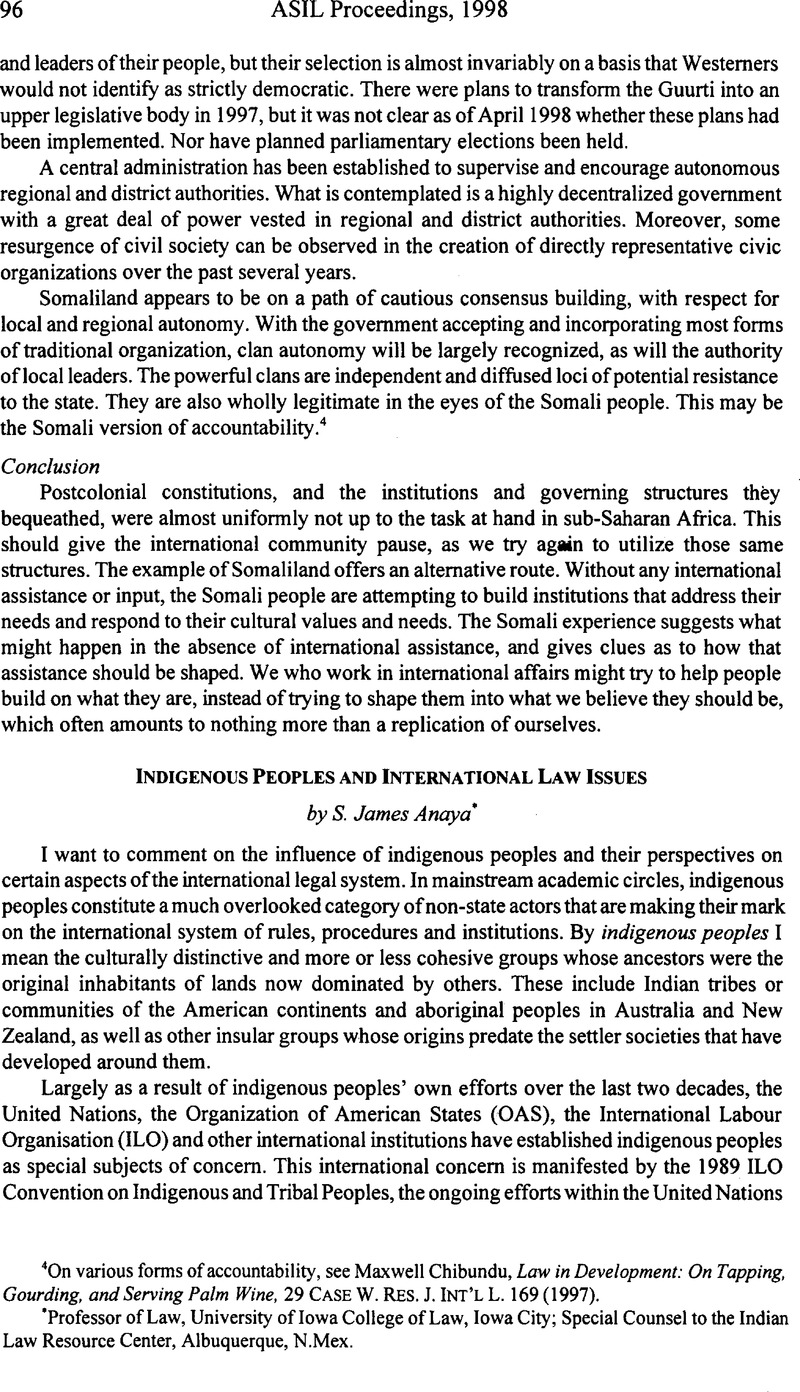No CrossRef data available.
Article contents
Indigenous Peoples and International Law Issues
Published online by Cambridge University Press: 28 February 2017
Abstract

- Type
- Multiple Visions of International Law’s Future
- Information
- Copyright
- Copyright © American Society of International Law 1998
References
1 See, e.g., Inter-Am. C.H.R., Report on the Situation of Human Rights in Ecuador, OEA/Ser.L/V/II.96 rev. 1, April 24, at 77-117 (examining impacts of oil development on indigenous lands): Case 11.577 (Nicaragua), Annual Report of the Inter-American Commission on Human Rights, OEA/Ser.L/VII.98, Doc. 7, rev at 46 (1998) (calling on Nicaragua to suspend, as a precautionary measure, concession for logging on indigenous-claimed lands); B. Ominayak, Chief of the Lubicon Lake Band v. Canada, Communication No. 167/1987, Hum. Rts. Comm., A/45/40, vol. II, annex IX.A (finding that state-permitted timber development in indigenous lands exacerbated historical inequities to constitute a violation of the International Covenant on Civil and Political Rights).


